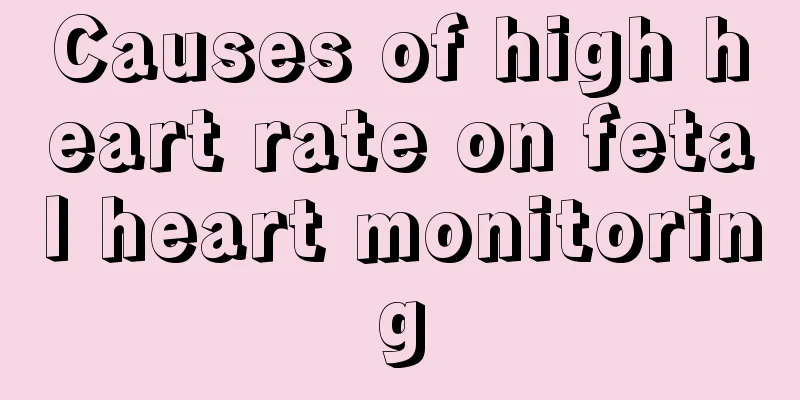Will uterine diverticulum become malignant if not treated?

|
Uterine diverticulum can usually only be discovered during a physical examination. There is no way to determine the type of disease with the naked eye. If the condition is mild, the patient does not need systematic treatment, but should go to the hospital for regular checkups. If any adverse changes are found, treatment should be sought immediately, because this disease may become malignant if no treatment is given. Diverticula are sac-like images formed when barium bulges outward through weak areas of the gastrointestinal wall, or when the entire layer of the wall protrudes outward due to adhesion and traction of adjacent tissue lesions outside the lumen. The mucosal folds inside and nearby are normal in shape, which is called a diverticula. Bladder diverticulum [etiology and pathology] Bladder diverticulum is a local outward bulge of the bladder due to defects in the bladder muscle layer. It often occurs in the posterior part of the bladder and is often accompanied by bladder beams and small chambers. [Clinical manifestations] If there are no complications, bladder diverticulum has no special symptoms. If there is obstruction or infection, symptoms of urinary tract infection such as difficulty urinating, frequent urination, and urgency may occur. Some diverticula can be as large as 2000ml, compressing the bladder neck and urethra, leading to lower urinary tract obstruction. The lack of muscle contraction in the diverticulum leads to poor urine drainage, which is easily accompanied by ureterovesical reflux, unilateral or bilateral hydronephrosis, and ultimately leads to renal failure. However, there are also cases of congenital giant diverticula that do not cause urinary tract obstruction. Because the muscle fibers in the wall of the bladder diverticulum are very few, urine in the giant diverticulum cannot be discharged during urination, resulting in symptoms of secondary urination. Some patients have hematuria due to infected stones in the diverticulum. A small number of patients may have urinary retention due to compression of the bladder outlet by the huge diverticulum located behind the bladder neck, constipation caused by compression of the rectum, and dystocia caused by compression of the uterus. [ Imaging manifestations ] 1. Urinary tract angiography: It appears as a saccular shadow protruding from the bladder, with a neck connected to the bladder. 2. Ultrasound manifestations: showing a sac-like or spherical liquid dark area connected to the side or posterior wall of the bladder, and enhanced echo of the posterior wall. 3. CT manifestations: Enhanced scans show cystic or spherical shadows filled with contrast agent protruding outside the bladder. If there are stones or tumors in the diverticulum, filling defects may be seen. |
<<: Treatment of cervical cysts
>>: Breast nodules become malignant in 2 months
Recommend
A little bit of blood
Women will have a hymen when they first have sex....
Will farting during pregnancy scare the fetus?
People usually feel very embarrassed if they fart...
Why does the skin of pregnant women become darker?
During pregnancy, women's bodies will undergo...
When is the best time to have a painless abortion?
Painless abortion is a common surgery. When doing...
Can I breastfeed my baby if I have a cough during breastfeeding?
Coughing during breastfeeding is a common symptom...
What is vulvar lichen?
For women, gynecological diseases are the most co...
What should girls pay attention to during their development?
When girls reach puberty, they not only begin to ...
Kidney crisis in diabetic patients: how to avoid the 'sweet burden'?
In modern society, the incidence of diabetes is i...
Wash the vulva with hands or towel
Women must master the correct way to clean their ...
Pictures of women getting sterilized
When it comes to contraceptive measures, most peo...
What are the disadvantages of holding urine at night during pregnancy?
After pregnancy, you will become less active, esp...
What are the symptoms of women's ovulation period
Pregnancy is a concern for many married couples. ...
How long is the breastfeeding period? Do you fully understand it?
For married female friends who have signed labor ...
What causes watery green vaginal discharge?
Leucorrhea is a substance secreted by the female ...
Let's talk about music and post-stroke rehabilitation
Let's talk about music and post-stroke rehabi...









